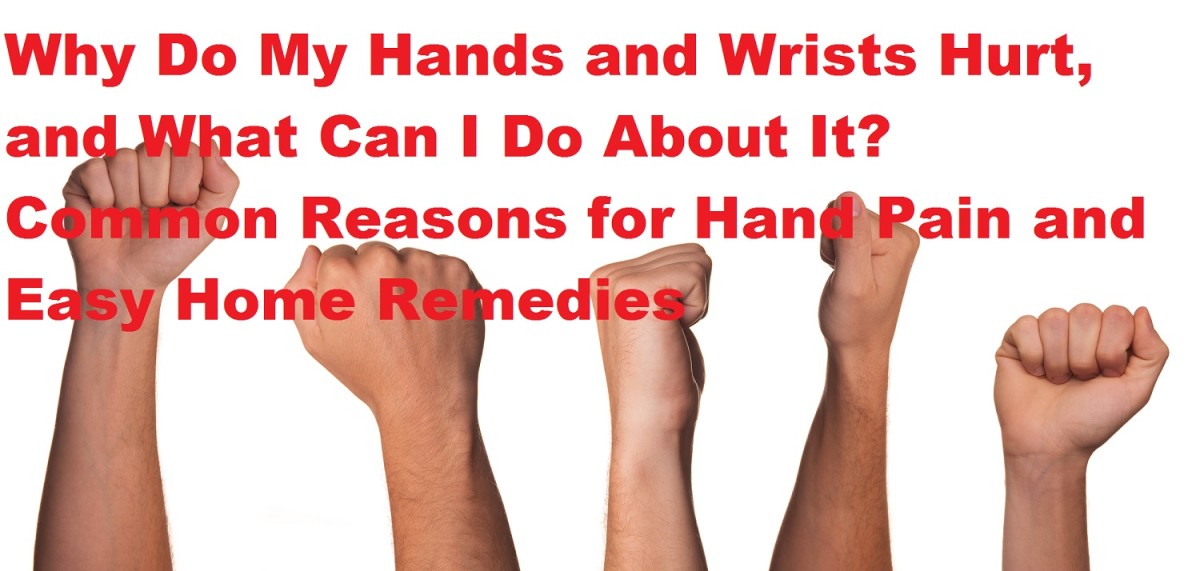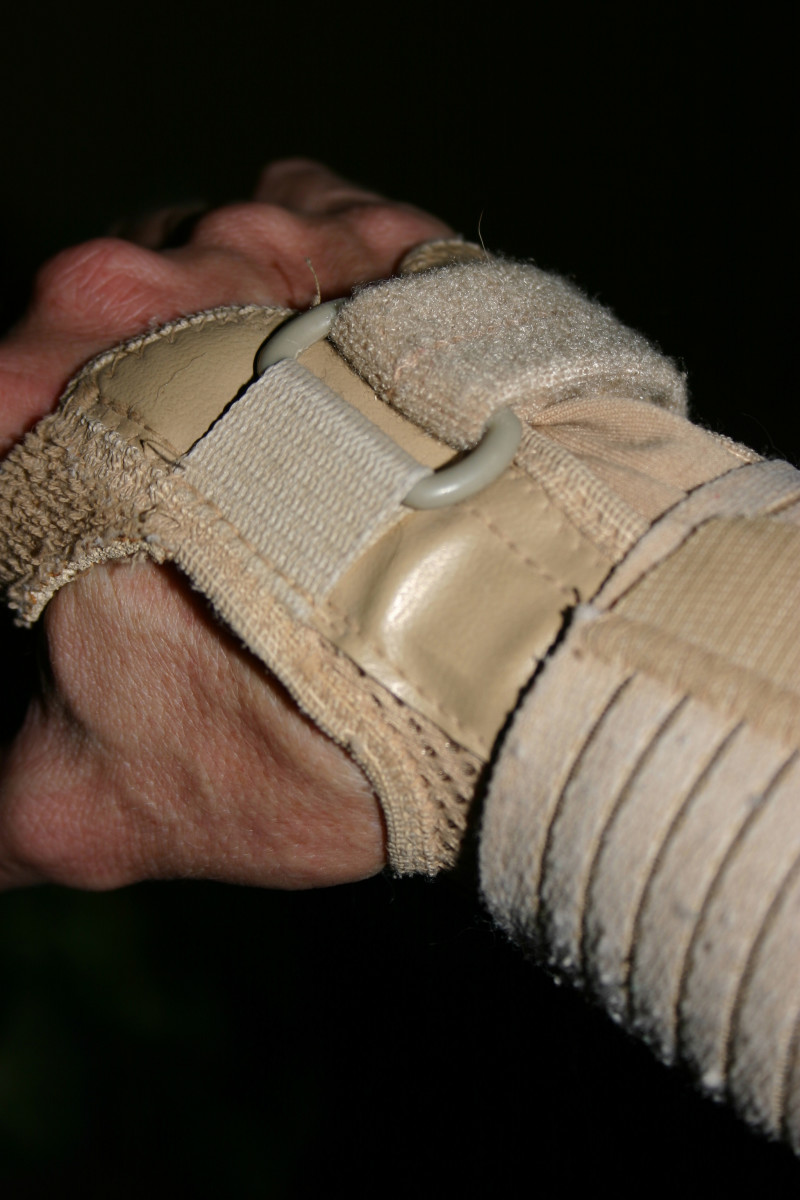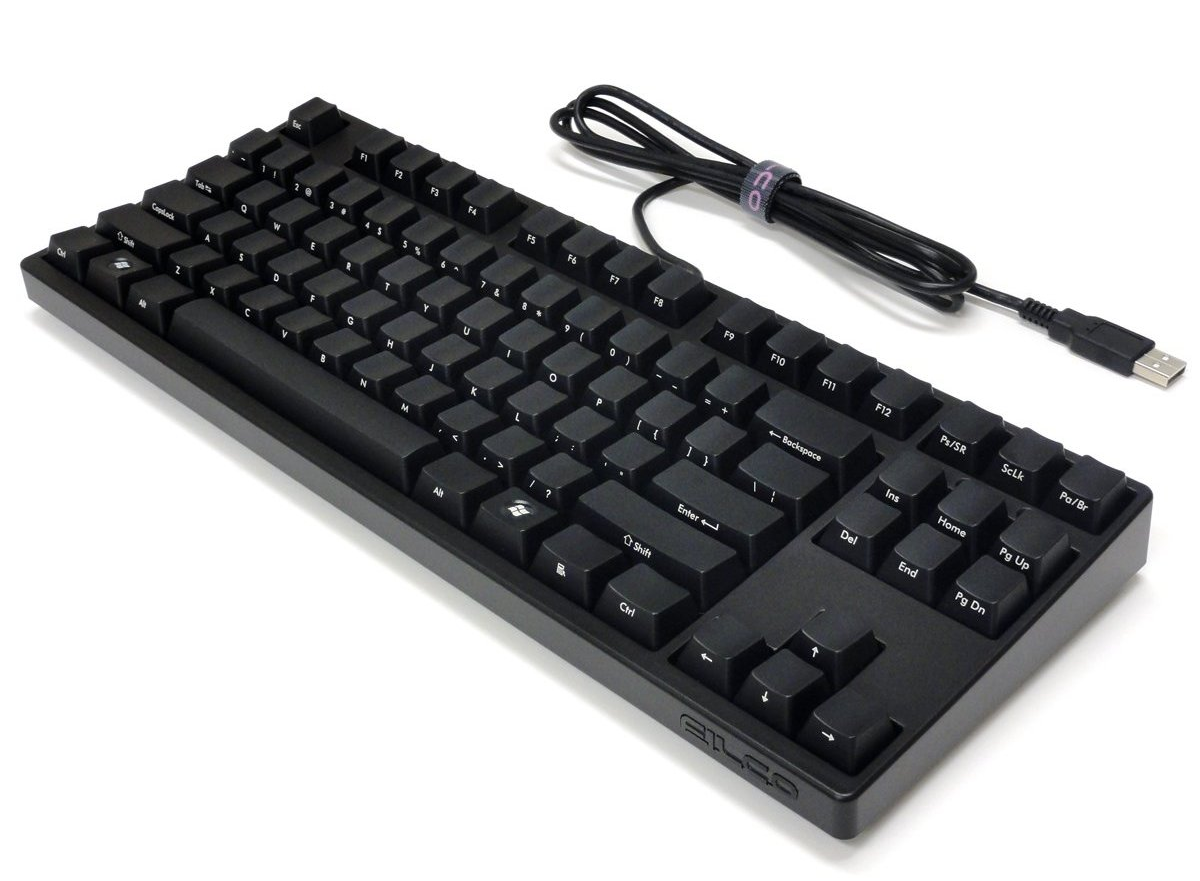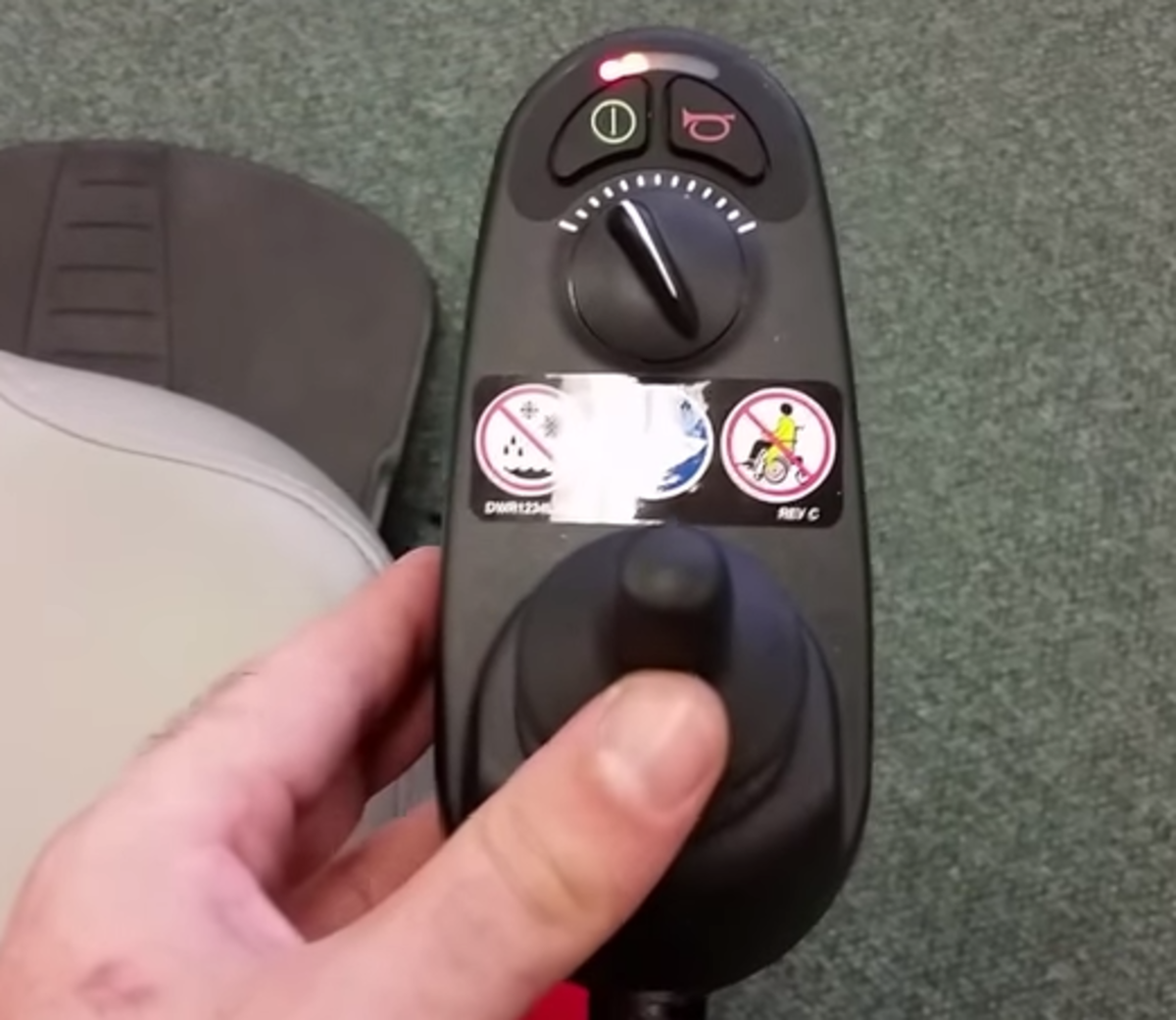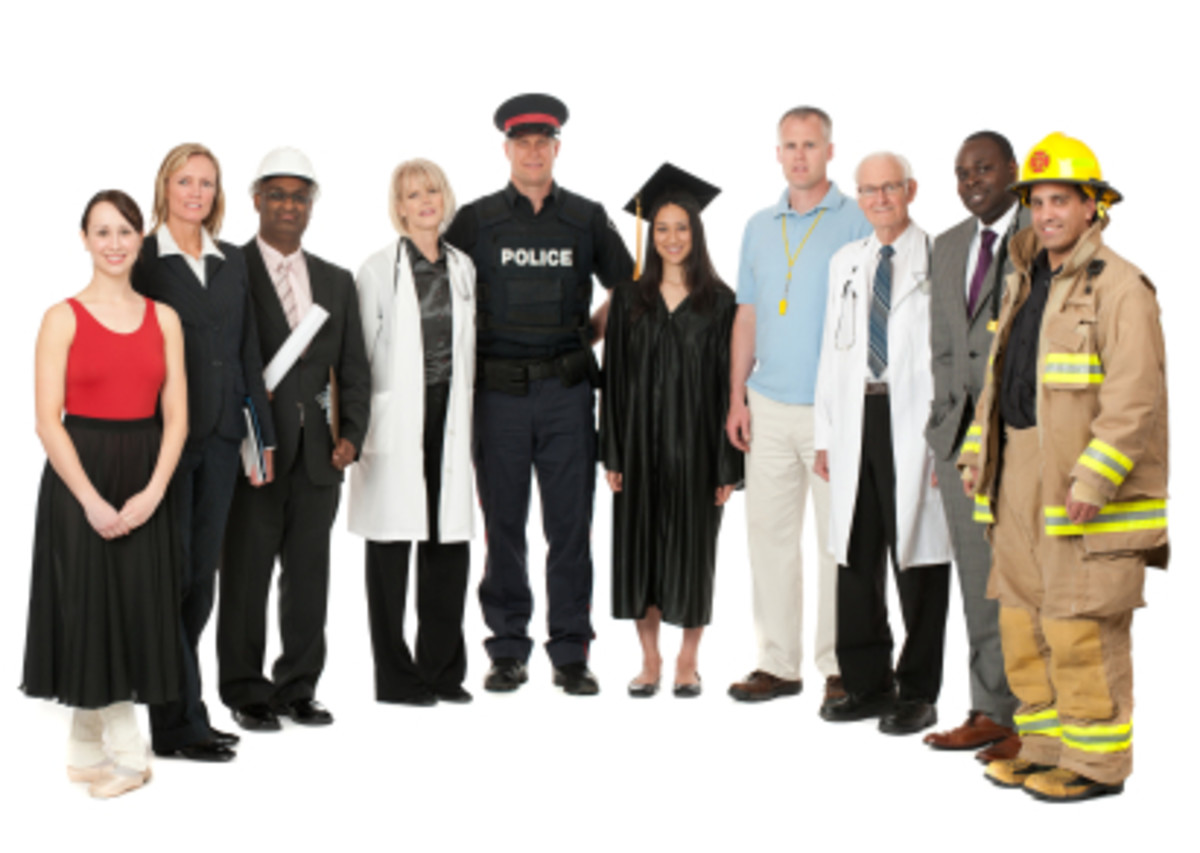CTS - Living with Carpal Tunnel Syndrome
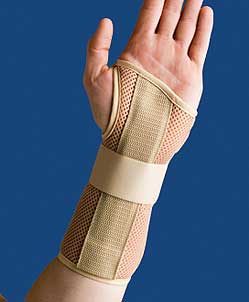
The overuse injury of the computer age
Carpal Tunnel Syndrome (CTS) is an overuse injury. Before the computer age, it was relatively rare. Seamstresses would get it, so would bakers. Repetitive strain injuries like this have increased dramatically since computers became a commodity that everyone seems to have - and some people have more than one!
The symptoms of CTS include pain and / or burning in the wrist (usually the center of the wrist, just behind where the metacarpal bones join the wrist bones), numbness or tingling in the thumb, index and sometimes even the middle finger, and a sense of extreme fatigue in the wrist when doing the things that aggravate the condition (like excessive computer use, mousing, etc.)
The carpal tunnel is the conduit through which all the tendons pass on their way from your forearm to the fingers. Just to show you that they're connected in this way, if you're right-handed, try grasping your left forearm with your right hand, at the widest part. Make sure your right fingers are on the underside (where there's no hair.) Let your left fingers go limp. Now squeeze your left forearm where you grabbed it, and let go. Repeat a few times. See your left fingers move? They move because those tendons pass through the carpal tunnel into the hand. Weird, huh. (This is a great trick to show to little kids. It freaks them out!)
Not only do the tendons go through that tunnel, but the nerves do too. Repetitive injuries that compress the carpal tunnel pinch the nerves AND the tendons. This causes pain and numbness - over time. Those with severe CTS can't carry grocery bags, can't carry pots and pans without dropping them, and become very fatigued if they have to write anything by hand. Certain activities, like playing the piano or guitar, scrubbing a floor, typing, or using a standard mouse on a computer will, over time, aggravate the condition. Some people can't even cut up their food, or put any weight on their hands (so getting on your hands and knees is out of the question - I'll leave the ramifications of that to your imagination!) Needless to say, it can be very debilitating in every facet of life.
What kinds of activities cause CTS?
Overuse comes in many forms:
- texting
- typing for long periods without a break
- excessive use of a standard computer mouse
- writing by hand for a long time
- computer gaming for hours
- holding your hands in a position which keeps your wrists in extension (more about that below) for prolonged periods
- grasping and holding an item for quite a while without letting go (especially if it's something you do on a regular basis)
- sleeping with your head propped up by your hand or resting your chin in your hands regularly
- any repetitive motion that puts your wrists in a position of extension especially if it includes exerting pressure on or moving the fingers multiple times
The wrist can flex (the motion happens when you move your palm closer to the underside of your forearm) and it can extend (when you move your palm away from your forearm.) Extension constricts the carpal tunnel, and makes it more difficult for the tendons to move. This (if repeated or sustained) can lead to CTS.
What if I need to type (and/or mouse) for my job?
Typing and mousing don't need to damage the carpal tunnel. Just remember these simple rules for your workplace or wherever you use the computer the most, and you'll reduce your risk of developing this syndrome:
- Use a keyboard tray - the right way. Angle the tray in such a way as to make the angle of your wrist neutral (neither in extension NOR in flexion) and much of the strain will be reduced.
- Take breaks. Occupational therapists and ergonomic assessors all agree that taking a 5-minute break once per hour will increase your productivity and avoid nasty things like CTS and eye strain, for that matter.
- Pay attention to ergonomics. You should NEVER be reaching out to your mouse with your arm straight out in front of you (elbow not bent or only slightly bent). Your arm should fall to your side and your elbow form a 90-degree angle. Your palm should hug your mouse and your wrist should NEVER be bent. In fact, the "rule of 90 degrees" needs to be the watch-word. Sit fully in your chair, and don't lean forward; your hips should form a 90-degree angle and so should your knees. If they don't, adjust your chair or use a footrest. Your computer screen should be at arm's length from your eyes and they should be looking straight ahead (not up or down) at the top third of the screen. All this does make a difference in how your wrist falls on your work surface. And.....
- Never, NEVER rest your wrist on your "wrist rest." The wrist rest was invented to REST your wrist, not to push on while working. If you use it while working, it will compress that tunnel very quickly, and you will know pain.
But I've already got it - and it's bad. What now?
There are a few treatment options for you if you have CTS and you've tried all you can to stop its progression. Here are a few more you might not have considered:
- Chiropractic services. Believe it or not, a chiropractor can really reduce your pain level. I was skeptical at first, but I worked right beside a former chiropractor once - and when I mentioned that my wrist hurt, she got my permission to manipulate my wrist - and the pain went from a 7/10 to a 3/10 within 2 minutes! I was amazed! I got her to do this a few times, and took mental notes - now I can do it myself! :D
- Physiotherapy. Physiotherapists can give you specific exercises to do and suggestions that will help you in your work. They might even try acupuncture!
- Topical over-the-counter anti-inflammatory medications. Rubs like A-535, which is simply Aspirin in topical form, can relieve minor aching.
- Regular NSAIDs. Non-steroidal anti-inflammatory drugs can give some relief. Just be sure you take them with food whenever possible, because they can be hard on your stomach.
- Change your mouse. Consider getting a ball mouse! know, it takes some getting used to, but now - after having made the adjustment - I would not use any other kind. These little critters take about 70% of the stress from your mousing hand.
- Switch your mousing hand. This tactic, especially in combination with a ball mouse and even as a temporary measure, can be a great relief for that tired, aching wrist.
- Do something else. This sounds so simple but it does work. Find something completely different to do. Go for a walk, use another muscle group entirely. It gives your wrist a rest you can't get in any other way.
- Shake it. (WHAAT?) This was recommended to me by my chiropractor friend and (incredibly) it works, if used sparingly. When nothing else will touch the pain, when you feel as if there's a big ball of tension in the joint, and if you have to keep keying or mousing for a while longer, stop for a minute. Just a minute. During that time, remove any rings or other loose jewelry you have on that hand. Then put your arm down by your side and completely relax your hand. Then shake your hand, back and forth, up and down, as if you were trying to shake water off yourself. I couldn't believe the results the first time I tried this. Don't hurt yourself, but let gravity and centrifugal force do a chiropractic manipulation of the bones and tendons in your wrist. It's amazing.
- If all else fails, talk to your doctor (if you haven't already). Your CTS might be so bad that it requires surgery. Try not to freak out... just make sure you have lots of support at home and at work if you need to use this option, because recovering from this surgery takes a bit of time. It's not for everyone, but sometimes carpal tunnel release surgery can make a big difference.
The best thing I can tell you about living with CTS is this: it's not the end of the world. You CAN do this as long as you are your own best friend and you look after your needs ... and don't be embarrassed to ask for help (from friends, co-workers, medical professionals and paraprofessionals) if you need it.

